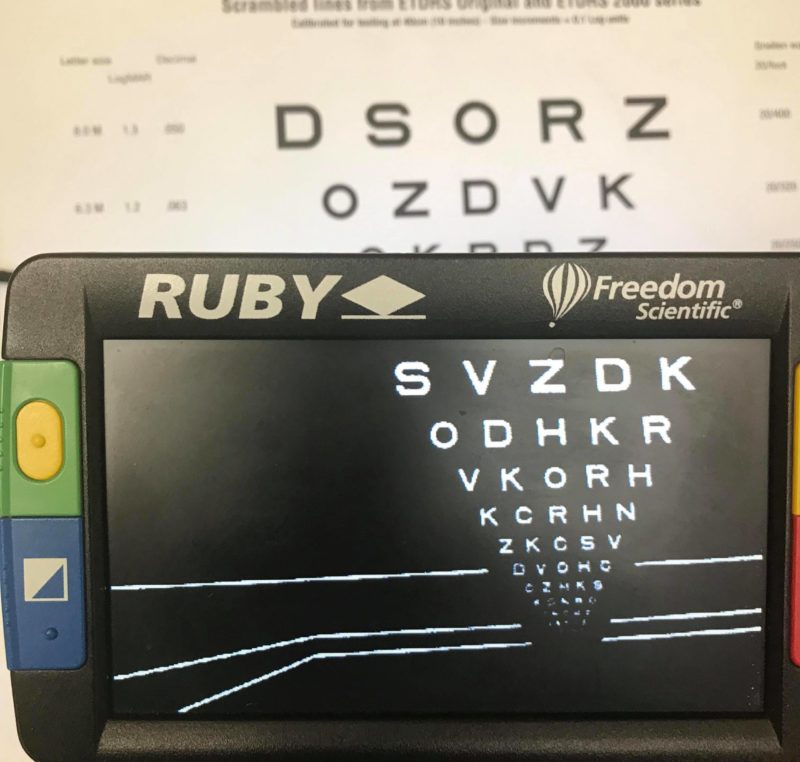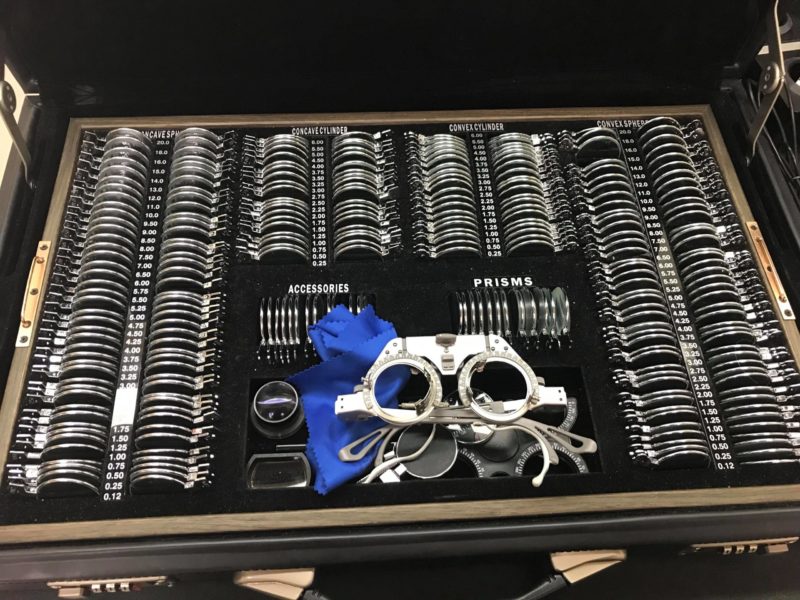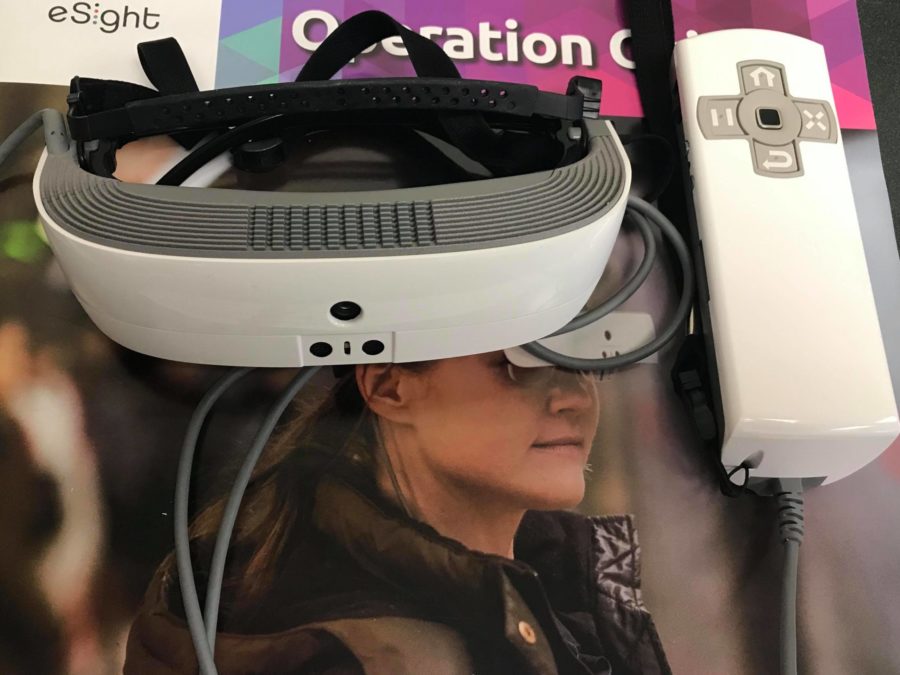Whether you’ve already taken a low vision course in optometry school, or are still trying to figure out why you’re spending so much time on telescopes in optics, there’s a lot to low vision that even a non-low-vision optometrist can benefit from knowing. This is especially important because many patients will still see his or her “regular” eye doctor for an annual exam, especially if they have a systemic disease than can impact vision and is unrelated to the cause of the vision loss. For example, you may have a patient that has visual field loss from a stroke that happened several years back, but the patient also has Type II Diabetes. That patient will likely still come to you for routine eye exams, so it will be important to understand what devices or services he or she is using. This is especially important because your patients might express his or her complaints to you before they complain to the low vision provider. You were likely the one that referred them there in the first place, but they also may not know which doctor should be hearing the complaints.
What is Low Vision?
Low Vision is a branch of optometry that is focused on helping patients who suffer from vision loss that cannot be remedied with glasses or contact lenses. On occasion, low vision specialists also work as neuro-optometrists to help individuals who have vision loss due to a stroke or traumatic brain injury. An optometrist may send a patient to see a low vision specialist if he or she feels that the patient can benefit from these type of services.
Who Benefits from Low Vision?
There are several categories of patients who benefit from low vision. If a patient is in your office and they can’t be refracted due to pathology, trauma, or other sight-threatening conditions, it is worth it to consider a low vision referral. Even patients who are completely blind (with no light perception) can benefit from a low vision referral. This is because the goal of a low vision specialist isn’t helping patients get sight back; it is about helping patients live day-to-day with the sight that they do have.
Many exams with this type of specialist will include an initial evaluation of the patient’s current visual abilities, including contrast sensitivity and field of vision testing, along with an in-depth assessment of how the patient is currently getting around and what his or her goals are with respect to vision. Sometimes, these goals can be as simple as, “I’d like to be able to read the newspaper a little easier” in a patient with macular degeneration, but can be as challenging as, “I’d like to be able to drive” in a patient with a rod-cone dystrophy. The low vision optometrist will take all the information gathered and determine what therapies, devices, and vision aids will best fit the patient’s needs.
Common pathology seen in patients that can benefit from low vision services include:
- Individuals with Glaucoma
- Patients with Age-Related Macular Degeneration (wet and dry)
- Individuals who have a hereditary retinal disorders such as Albinism, Stargardt Disease, Retinitis Pigmentosa, and cone dystrophy
- Patients that have suffered from stroke or traumatic brain injury
- Individuals who have had trauma to the eye
A Low Vision Exam at a Glance
While a low vision exam bears a lot of similarity to a traditional exam, there are several major differences, including the way a refraction is performed.
Case History: A low vision case history includes all of the elements of a typical case history. However, as mentioned above, there is also a focus on visual goals and includes functional independence measures (FIM) scoring.
Refraction: While optometrists generally prefer using the phoropter, many low vision refractions are done in a trial frame. Being able to perform a trial frame refraction is a great skill to have, even if you don’t plan on going into low vision.
Medical Tints and Glare Control: Glare can be an issue, even if you’re fully sighted. However, with decreased vision, glare can become a serious problem. Some patients often require medical tints to function, such as those with ocular albinism, iris atrophy or aniridia.
Magnifying Devices: Various magnifying devices can be used to help the patient depending on his or her goals and remaining acuity. These include microscopes, telescopes, hand or stand magnifiers as well as portable and desktop CCTVs and wearable electronic devices.
Importance of Contrast and Lighting: For many low vision patients, good contrast and lighting are key to achieving better acuity. This is particularly true for patients with Age-Related Macular Degeneration (ARMD). A low vision specialist can help patients understand the best way to use contrast and lighting in different scenarios in order to optimize existing vision.
Ocular Health: Low vision exams do include an ocular health check. However, the goal here is to monitor an existing condition rather than diagnose a problem. It is still likely that the patient will continue to see a primary care optometrist as directed.
Additional Aspects: Low vision exams may include visual therapy as part of the referral. You may also spend time instructing a patient how to use low vision devices or even counseling family members about a condition so that they are better equipped to help.
Getting Started in Low Vision
If you’re curious about low vision as a student, consider shadowing at a low vision clinic or doing a fourth-year rotation with a low vision specialist. For those who would like to pursue low vision further, there are residencies available.
Don’t want to do residency? You can still learn about low vision from doctors in your community. Many low vision doctors are very passionate about what they do and are very happy to pass on their knowledge to the next generation of optometrists.
What questions do you have about low vision? Ask in the comments!




